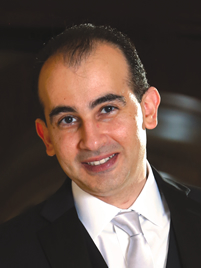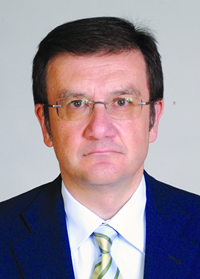Rheumatology’s long-time fascination with Takayasu’s arteritis is finally paying off. Collaborative international research keeps producing advances in the understanding of the pathogenesis, diagnosis, evaluation, and treatment of the disease.

“This is an unprecedented time in the study of Takayasu’s arteritis where productive international collaboration has led to real advances in our understanding of how to study and evaluate these patients,” said Peter A. Merkel, MD, MPH, Chief of Rheumatology and Professor of Medicine and Epidemiology at the University of Pennsylvania in Philadelphia. “There is much work being done on understanding the genetics of this disease and how best to evaluate disease activity from the physician and patient perspectives.”
Dr. Merkel, also Director of the Vasculitis Clinical Research Consortium, will be one of three speakers at a clinical science symposium exploring Advances in Takayasu’s Arteritis on Monday from 2:30 – 4:00 pm in Hall D. Many of the advances in the understanding of Takayasu’s stem directly from genetic studies. As recently as five years ago, little was known about the genetics of the disease beyond an association with HLA-B*52.

“About three years ago, we published our first paper looking at the genetics of Takayasu’s using a collaborative approach with patients from the Turkish Takayasu Study Group and the Vasculitis Clinical Research Consortium in the U.S. and Canada,” said Amr H. Sawalha, MD, Professor of Internal Medicine and Marvin and Betty Danto Research Professor of Connective Tissue Research at the University of Michigan. “We now have established multiple loci for Takayasu’s, which allowed us to look at which genes, which cell types, which pathways, which molecules might be involved in the pathogenesis.”
Loci have been identified that code for a variety of cytokines, including IL-6, IL-12, and IL-23. Methotrexate is frequently the first-line therapy for most patients, Dr. Sawalha said, but treatment typically progresses to biologic agents if methotrexate fails. Tocilizumab, an IL-6 receptor inhibitor that has been trialed in giant cell arteritis, is sometimes used for Takayasu’s. Ustekinumab, approved for psoriasis, inhibits the IL-12 and IL-23 pathways.
“Takayasu is a rare disease, but every rheumatologist can expect to see these patients in their practice,” Dr. Sawalha said. “Because it is so rare, three or four patients per million, this kind of international collaboration is essential.”

Haner Direskeneli, MD, Professor and Chief of Rheumatology at the Marmara University School of Medicine in Istanbul, Turkey, has been instrumental in the international effort to better understand Takayasu’s. He will explore the latest findings in the assessment of disease activity and damage in Takayasu’s.
“Takayasu’s patients should primarily be followed by rheumatologists and no other specialty,” he said. “Although these patients go to primary care, cardiologists, and others, rheumatologists have more experience with vasculitis and the use of immunosuppressive agents to treat chronic inflammatory diseases.”
Simply diagnosing Takayasu’s is a challenge. There are no specific laboratory tests or biomarkers, Dr. Direskeneli said, which leaves clinicians dependent on clinical features and imaging for diagnosis. Progression is usually very slow, and the typical patient has been experiencing five years of symptoms before diagnosis.
It can be just as difficult to assess disease activity. Conventional angiography has long been the gold standard, but angiography can only image the lumen, not the vessel wall. A growing number of clinicians are using MRI and PET-CT to assess disease activity and progression, although it can be difficult to obtain repeat images on a regular basis. Composite activity scores and novel biomarkers such as pentraxin-3 show promise but still need significant work. Cardiovascular risk is another area of vital interest.
“We found a hazard ratio of 4.5 for cardiovascular events in patients with Takayasu’s compared to an age-and gender-matched group,” Dr. Direskeneli said. “And the Framingham risk score is significantly increased in Takayasu’s. And because Takayasu’s seems to be so rare, these patients are generally misdiagnosed and lose a lot of time. These are all issues for future studies.”
Dr. Merkel will focus on the management of Takayasu’s, including data from the first clinical trial in the disease, which
concluded recently.
“The emergence of new biologic therapies provides opportunities to advance the treatment for this disease,” Dr. Merkel said. “I will review the evidence for treatment options ranging from medical therapy to appropriate use of invasive and surgical options. Although there remain extensive unmet needs in the care of patients with this rare disease, clinicians will benefit from better understanding of the current stat of the science and the practice.”
CLINICAL SCIENCE TRACK
Advances in Takayasu’s Arteritis
2:30 – 4:00 pm Monday • Hall D


